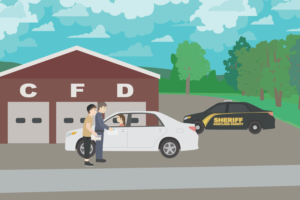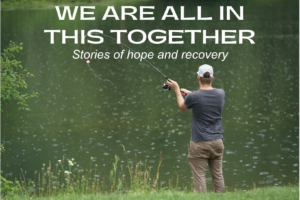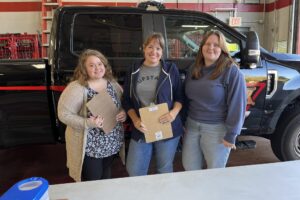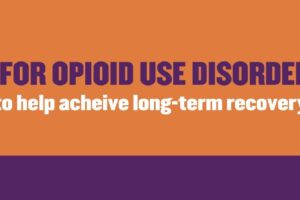Healing Cortland Sustainability Plan: Moving Forward from HCS
What happened and what did we accomplish?
At the start of 2023, we told you about our action planning process. We spent most of 2022 building a coalition to look at local data, identify gaps, set data-driven SMART goals, and select evidence-based strategies to reduce overdose deaths in Cortland County. The Opioid Task Force’s workgroups selected 15 strategies that cover naloxone distribution, safer opioid prescribing, safer drug disposal, and expanding, linking people to, or retaining people on medication for opioid use disorder (MOUD).
Over the course of 2023, the Healing Cortland Team worked with Columbia and local service providers to figure out how best to implement these strategies and then allocate almost $500,000–and resources like training and technical assistance–to bring these strategies to life in the most effective way possible. Some of these strategies morphed over time, which we knew would happen. Even with a thorough, data-driven approach to planning, we knew there would be unexpected setbacks and changing needs. We were able to adapt our action plan throughout the processes to address those changes.

Some of our community’s biggest accomplishments over the course of this project are:
- CARS is opening a clinic in the City of Cortland, marking the first time methadone has been offered within Cortland. While this was not originally one of our strategies, an opportunity opened up and Project Director Sara Watrous was able to work with Columbia to secure an additional $221,136 to support this.
- Healing Hearts Collaborative expanded passive Narcan distribution (through mounted boxes) into the more rural parts of the county by installing NPODs (Naloxone Points of Distribution) in rural communities with champions who host and help keep them stocked.
- REACH Medical worked with Access To Independence to do street outreach in Cortland for 10 weeks, starting 7 people on MOUD, referring 22 others, and making connections and giving education to 54 individuals.
Throughout the action planning and implementation processes, we worked with many great partner agencies to run three coordinated awareness/anti-stigma campaigns about naloxone and MOUD.
What’s continuing after HCS ends?
Implementation of the HEALing Communities Study officially ended on December 31, 2023, but some of our strategies are continuing through March of 2024, and so are staff and data support through the Healing Cortland team. Even without the funding that HCS brought into Cortland, partner agencies will be continuing most of the strategies even after March.
All Naloxone-related strategies will continue in some form. All MOUD-related strategies are likely to continue in some form, but we’re waiting to see if funding from a few different grants comes through. The main players supporting the ongoing strategies will be:
- CACTC will continue to provide data support to partners, help coordinate outreach teams doing similar work, help identify new locations for NPODs, and help coordinate medication disposal efforts.
- Cortland County Health Department will continue to work with EMS and fire departments throughout the County and regional EMS to expand leave-behind programs where first responders give kits to people at the site of an overdose they respond to.
- CARS will continue outreach and induction efforts as they open their Opioid Treatment Program in Cortland. CARS also applied for funding through DOH to significantly expand the peer outreach they’d be able to do in Cortland (they don’t know if they have been awarded these funds yet).
- Family and Children’s Counseling Services will continue their outreach to unhoused people, outreach on nights and weekends, and in the rural communities. This work will be at least partly funded by their new ROAR program for low-threshold MOUD. This program will also support the continuation of MOUD expansion and retention efforts previously funded by HCS, including peer outreach staff.
- Healing Hearts Collaborative will continue their outreach to unhoused people, outreach on nights and weekends, and in the rural communities. They will also continue managing and stocking NPODs
Throughout this process, the Healing Cortland Team has been thinking about sustainability. We’ve been working with partners to identify and apply for grants that can help keep this work going even after the funding from HCS ends. In March of 2023, we worked with Catholic Charities to apply for a SAMHSA Treatment for Individuals Experiencing Homelessness grant. We also helped CARS apply for a DOH grant focused on expanding harm reduction services and improving overdose response. We directly applied for an OASAS harm reduction services grant focused on outreach, Narcan distribution, and linkage to harm reduction services.
But the Healing Cortland Project is more than just the action planning and strategies. We had three full-time staff members dedicated to supporting the HCS process–a Project Director, a Data Coordinator, and a Community Engagement Coordinator–and we had workgroups within the Opioid Task Force that put in a lot of work to tailor the HCS to Cortland. Most of these elements will also continue after March, but in slightly different ways.
The Opioid Task Force
The Opioid Task Force will become an ad hoc committee of the Substance Use Disorder Subcommittee of the County Community Services Board. The Healing Cortland Team will work with the SUD Subcommittee over the first couple months of 2024 to facilitate this transition. This will mean
- A new name
- A slightly revised purpose and focus (looking at more than just opioids, looking at more than just overdoses…)
- Different leadership
The Workgroups
During HCS, the Opioid Task Force had four workgroups. These will mostly continue
- The MOUD workgroup has been an important space for treatment providers and social service providers who make referrals to connect and to plan strategy implementation.We expect this to continue as a provider group where regional treatment providers can discuss trends they are seeing, update each other on changes, and collectively troubleshoot. CACTC will continue to provide some limited data support/ updates, but we expect this to be a more autonomous group. Currently, FCCS & CARS co-chair this group and we hope it will continue to be co-lead by partner agencies. If additional county OSF are secured, CACTC may be able to provide some limited coordination/ facilitation support. Members of this group will likely also be on the OTF.
- The Naloxone Workgroup has been an important space for mobile/outreach teams and other OOPP staff to connect and to plan strategy implementation. CACTC plans to continue facilitating this workgroup to help coordinate county-wide naloxone distribution work and other harm reduction related outreach. Members of this group will likely also be on the OTF and can provide updates to both groups
- The Lived Experience Group has been an important advisory group to guide action planning and implementation of HCS strategies and campaign messaging. It has also resulted in some concrete resources for members and expanded support for the emerging Recovery Community Organization (RCO). Based on feedback from members, we are working with the new RCO, Cortland Area Recovery Project, to fold some of the LE Group activities/ responsibilities into the RCO. CARP has been meeting weekly since the summer and has a core group of ~ 14 members. CACTC will bring pressing topics of discussion, requests for input/ feedback to this group and will continue to help them navigate and advocate within local governmental structures, including the new iteration of the Overdose Task Force. CARP recently put in proposals for Opioid Settlement Funds and through Youth Voice Matters (FOR-NY) with support from CACTC. We hope the momentum of this group continues as it fills an important gap in the community. We are also working to secure funding to be able to continue the Lived Experience stipends that we have been able to offer to members throughout implementation.
- The Communications Implementation Team worked to fine-tune and disseminate the health communications campaigns developed as part of HCS. This group gave feedback on messaging, posted to social media accounts, distributed print materials, and helped organize events. We expect to continue sharing prevention and harm reduction related campaigns (CACTC has already developed several) and we hope to continue coordinating with a group of partners to share these campaign materials with a broader audience than any one agency would be able to reach.
Healing Cortland Team
Cortland had a full-time team of three staff at CACTC to help implement the HEALing Communities Study locally. This included
- Sara Watrous as Project Director. She has been overseeing the grant implementation working closely with Columbia, providing leadership support to the OTF, supporting strategy implementation, and facilitating administrative work between CACTC, implementation partners, and the County. Sara has also largely facilitated the Lived Experience Workgroup. CACTC has applied for county Opioid Settlement Funds to support this role part time, and has built part-time support of this role into other funding applications currently under review. We expect the Project Director to continue providing limited facilitation support to the OTF in whatever form it takes, as well as to the Naloxone and MOUD workgroups.
- Nicole Carter as Data Coordinator. She has been establishing and supporting the data-driven infrastructure of the Task Force. CACTC has applied for county Opioid Settlement Funds to support this role part-time, and has built part time support of this role into other funding applications currently under review. We expect the Data Coordinator to continue assisting in data collection (e.g. helping create forms) and data analysis to understand and use the data for both iterative quality improvement and to inform strategy implementation. The DC will provide data support to the Naloxone & MOUD workgroups that plan to continue meeting regularly.
- Aster Parrott as Community Engagement Coordinator. They have been facilitating coalition and workgroup functions, coordinating communications work, doing trainings and other educational work. Aster has also helped facilitate the Lived Experience Group. We do not expect this position to continue as such, but CACTC is exploring ways to use existing marketing contracts and communications work that we’d do anyway to fill this niche.





